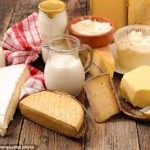
Linkage’s “study” of comments filed in a U.S. Food and Drug Administration docket that concluded in January purports to show that consumers would prefer that dairy terms remain on non-dairy beverages and other products. The FDA solicited comments because, according to the agency, it “has concerns that the labeling of some plant-based products, which can vary widely in their nutritional content, is leading consumers to believe that those products have the same key nutritional attributes as dairy products.”
But as has been the case throughout the current labeling debate, the fake-milk marketers continue to mischaracterize what FDA has been considering, trying to turn a serious discussion of consumer transparency and nutritional inferiority into a red-herring debate over whether consumers think almonds are a dairy product – in this case, by presenting anincomplete and selective review of comments to the FDA as authoritative.
“None of the fake foods stealing dairy terms contain the same nutrition as the milk or dairy product they attempt to imitate,” said Jim Mulhern, president and CEO of the National Milk Producers Federation. “The vegan and animal rights activists who were encouraged by our opponents in this debate to flood the docket with comments understand that these fake products don’t contain milk. But that’s never been the issue. Research clearly shows that consumers don’t understand the nutritional differences between real, natural dairy products and the inferior, imitation products masquerading as milk.”
In contrast to the cherry-picked data from PBFA, Mulhern pointed to actual public opinion research conducted by Ipsos, a survey firm that has conducted scientifically valid research on the topic:
- 77 percent of buyers of dairy and plant-based beverages think almond-based drinks have as much or more protein than dairy, when in fact real milk has as much as eight times more protein;
- 78 percent thought plant-based drinks had at least as many vitamins and minerals as dairy, also wrong;
- 68 percent thought such beverages had at least as many “key nutrients” such as calcium and potassium, which they do not.
“It’s understandable why the fake-milk crowd would rely on fake facts – the actual ones aren’t on their side,” Mulhern. “But that doesn’t excuse their adulterating a debate taken seriously by the American Academy of Pediatrics, the School Nutrition Association, and others who have thoughtfully explained why labeling transparency is a public good.”
NMPF has outlined a constructive path forward to resolve the labeling issue. In February it filed a citizen petition with the U.S. Food and Drug Administration outlining a labeling solution that reinforces and clarifies current FDA labeling regulations. The petition may be accessed here.
Meanwhile, FDA inaction is encouraging continued chaos in the marketplace, one that’s engulfing other dairy products as well as milk. Fighting fake dairy is high on the agenda at the American Butter Institute’s annual conference, which begins today in Chicago.






















